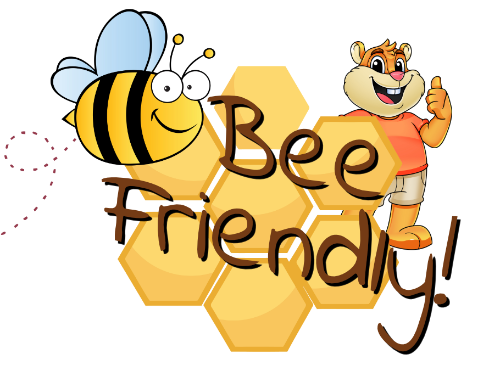Have a question?
Have a question about this product? Please feel free to contact us, we will be happy to help you!

Have a question about this product? Please feel free to contact us, we will be happy to help you!
 For many rodents, hay is part of the basic diet. The hay content in the digestive plan is high and therefore the quality of the hay is also very important. Determining for acceptance, but also for the balance of nutrition and the complete coverage of needs.bunnyNature Fresh grass Hay stands for the highest quality with maximum diversity of plants.
For many rodents, hay is part of the basic diet. The hay content in the digestive plan is high and therefore the quality of the hay is also very important. Determining for acceptance, but also for the balance of nutrition and the complete coverage of needs.bunnyNature Fresh grass Hay stands for the highest quality with maximum diversity of plants.
Bunny Nature FreshGras Hay is not just any hay. It is a premium hay of the highest quality! It's nice to know that the hay is dried indoors and packed by hand. This may seem time-consuming at first glance, but this is the only way to separate incorrect plant species that are included in the harvesting process from the hay. In addition, wrapping the hay by hand ensures beautiful long stems that have retained their maximum nutritional value. A hay stem that has been used frequently loses essential nutrients.
✔ Natural plant diversity
✔ Gentle drying indoors
✔ Rich in fiber, crunchy & low in dust
✔ With natural nutrients and fibers
The Bunny Hooi guidelines are strict. The hay must be rich in fiber, crunchy and of course dust-free. Hay that does not meet these requirements will not be packaged. Crispy hay is important for good tooth wear and good gastrointestinal function of the animals.
The ingredients don't lie! The hay consists of no fewer than 18 different types of plants.
Timothy, meadow grass, foxtail, ryegrass, red fescue, meadow grass, bent grass, rosehip, German meadow grass, dandelion, silver bean, hornflower, yarrow, narrow plantain, white clover, red clover, roller trefoil, red fescue with large shoots.
This is the most original and natural hay you can imagine. Of course, the hay comes from protected nature reserves: these unfertilized and unsprayed areas are home to a diversity of plants and herbs that no other normal meadow can match.
But nature conservation meadows also need to be mowed (at a late mowing time), because this is the only way to preserve the diversity of plants and thus the attractive character of the meadows for animals.
And this is all part of the bunny sustainability cycle: We mow the nature-protected meadows so that animals can still find their valuable food and thus receive hay that is unique in terms of quality, composition and structure.
After mowing, the hay – now pressed into bales – undergoes a 'wellness treatment', so to speak. The hay is gently dried with warm air, CO2 neutral and completely in harmony with nature. This preserves, among other things, the natural color, the varied taste and the multitude of fine herbs and plants. That's unique!
Regular mowing is important to maintain plant diversity. If this were not done, a monoculture would arise. only a few plant species would spread and diversity would disappear. These meadows are not attractive to many animals, neither as a habitat nor as a food source. We are therefore actively committed to keeping natural habitats attractive for animals in every respect. We only start mowing from mid-June, so as not to disturb any breeding animals. The supervision of nature protected meadows is done by experts, who officially give their permission to mow.
Here, a lot of value is still attached to handicrafts. The hay is gently shaken and all the finest plants and herbs - as well as the long, crispy blades - are carefully placed by hand into paper bags. The hay fresh bags are very special: you can only see the fantastic hay through a small window. this way you get a good impression of the quality. In addition, the contents are also protected against fading and the fine holes offer ideal air circulation. The hay is optimally stored and retains its original quality in the racks.
Hay is natural nesting material for small rodents and an essential fiber source for larger rodents and rabbits!
![]() Small rodents such as mice, dwarf hamsters, hamsters and gerbils like to make a nest out of hay. Small rodents have a much lower need for fiber, but if a shortage occurs or the need is temporarily greater, they are more than happy to nibble on the hay. This means hay has two functions for small rodents!
Small rodents such as mice, dwarf hamsters, hamsters and gerbils like to make a nest out of hay. Small rodents have a much lower need for fiber, but if a shortage occurs or the need is temporarily greater, they are more than happy to nibble on the hay. This means hay has two functions for small rodents!
![]() Hay is essential for guinea pigs, rabbits, chinchillas and degus. The animals must be given unlimited hay every day so that the intestines continue to function properly.
Hay is essential for guinea pigs, rabbits, chinchillas and degus. The animals must be given unlimited hay every day so that the intestines continue to function properly.
![]() Hay is great for hamsterscaping! Mix the hay with your own bedding or place layers in the bedding, alternating hay and bedding. This gives the ground cover more strength and tunnels made by the small rodents are better preserved. The hay also gives a beautiful effect to the eye, the color difference gives the enclosure a very natural look.
Hay is great for hamsterscaping! Mix the hay with your own bedding or place layers in the bedding, alternating hay and bedding. This gives the ground cover more strength and tunnels made by the small rodents are better preserved. The hay also gives a beautiful effect to the eye, the color difference gives the enclosure a very natural look.
| Content (approx): | 750 gram |
| Composition: | Timothy, Bluebell Flower, Foxtail, Rye Grass, Red Fescue, Field Broom Grass, Ostrich Grass, Crop Hair, German Meadow Grass, Dandelion, Silveschoon, Hornflower, Yarrow, Narrow Plantain, White Clover, Red Clover, Roller Clover, Red Fescue with large |
| Analysis: | Crude protein 12%, Crude fiber 23%, Calcium: 0.5-0.9% |
| Promotes Foraging: | Yes |
| Suitable for: | Rodents, Mouse, Dwarf Hamster, Hamster, Gerbil, Rat, Guinea Pig, Rabbit, Chinchilla, Degu |
| Type: | supplementary pet food |
| Particularities: | The quality of the hay depends on the harvest. |
| Disclaimer: | Not for food producing animals |
Een aanrader, alle smaken vinden ze heerlijk!
Fijn hooi altijd groen
